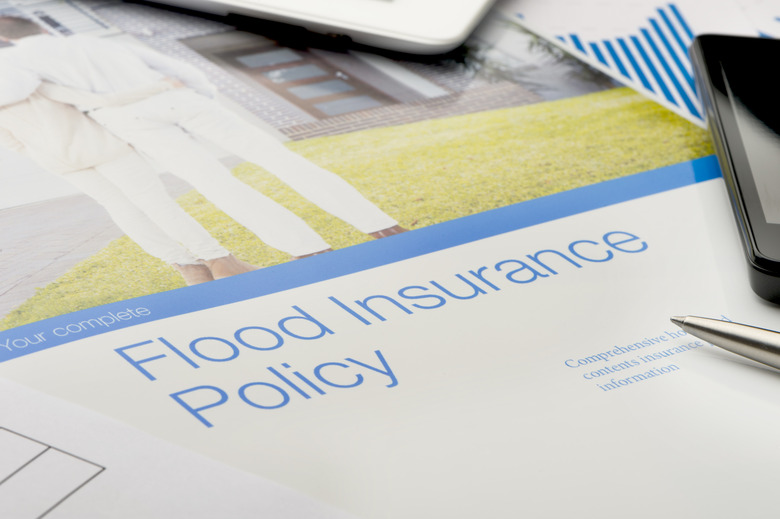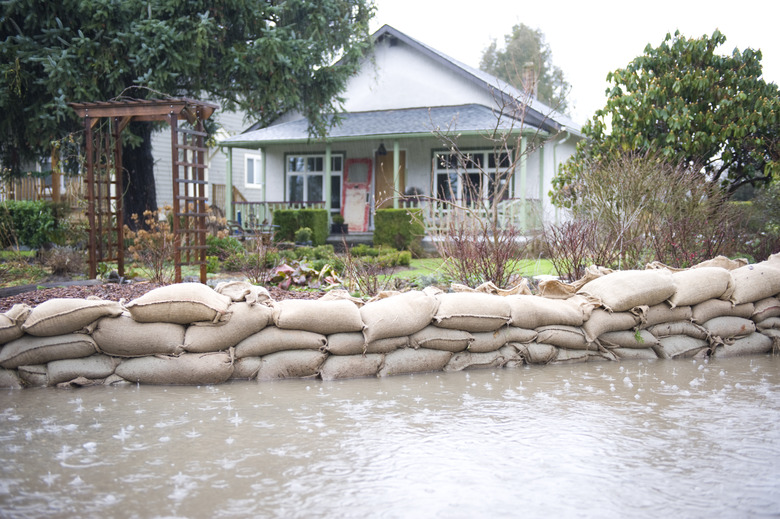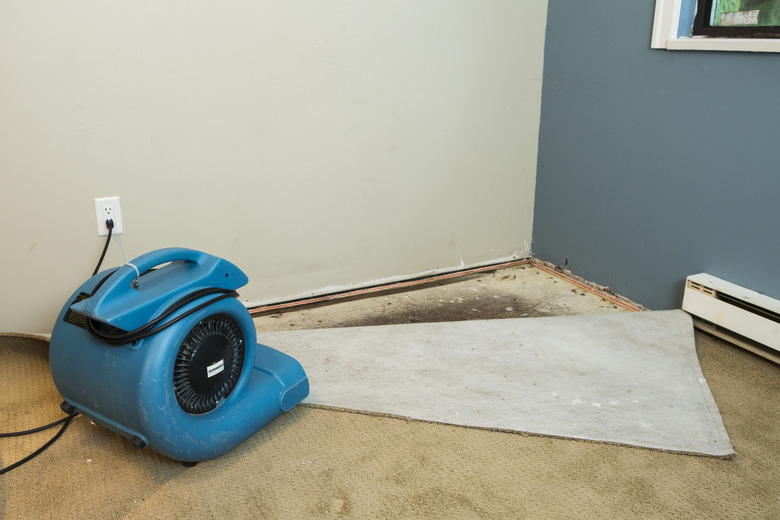What Does Flood Insurance Cover? Here's What Homeowners Need To Know
Flooding is involved in 90 percent of natural disasters in the United States, making it the most common kind of natural disaster Americans endure. And the damage can be catastrophic. In just one week in July 2022, for instance, both St. Louis, Mo., and Eastern Kentucky suffered major flash flooding with multiple lives lost and damage expected to reach up to $1 billion. To make matters worse, only 27 percent of Americans have flood insurance on their homes, which essentially means that damage incurred from a flood will not be covered.
Here's what homeowners and renters need to know about flood insurance — including what it costs, what it covers, and how to file a claim.
Tip
Flood insurance covers damage from an event (typically a storm or a natural disaster) that affects two or more properties, including the one belonging to the claimant. Flood insurance will typically cover a home's structure, its systems (HVAC, electrical and plumbing), and permanently installed appliances, among other items.
Am I Required to Have Flood Insurance?
Am I Required to Have Flood Insurance?
If you live in a high-risk zone, you are likely required to have flood insurance, but it's optional in other areas — and you may qualify for a reduction in your insurance premium if you add it on to an existing homeowners insurance policy. However, because flood incidents are rising due to the effects of climate change, it's in your best interest to add a flood insurance policy to your home because regular homeowner's insurance does not cover flooding.
Floods can happen anywhere, but some locations are at a particularly high risk for a severe flood. Homeowners in those flood zones are required to have flood insurance, which they can obtain through the National Flood Insurance Program (NFIP). If you live in a flood zone and are wondering if you need a flood insurance policy, chances are that you already have one — and the cost of the policy was rolled into your monthly mortgage payment at closing.
If you're unsure of whether you live in a flood zone, you can check out the flood map published by the Federal Emergency Management Agency (FEMA), which is accessible through FloodSmart.gov. FEMA designates high-risk areas on the map by placing the letter A or V in front of the name of such areas to distinguish them from moderate-risk and low-risk zones, which it designates with the letters B, C and X.
What Does Flood Insurance Cover?
What Does Flood Insurance Cover?
It's important to remember that insurance companies make a distinction between flood damage and water damage, and it can be a somewhat gray area that warrants clarification with your company. Although specific definitions differ, the general idea is that flood insurance covers damage incurred during an event that affects two or more properties, including the one belonging to the claimant, while a homeowners' policy covers water damage incurred during an isolated event, such as a plumbing leak or roof leak.
Homeowners with both a homeowners policy and a flood insurance policy don't have to worry about this distinction, but those with only a homeowners' policy might be distressed to find that they aren't covered when runoff from a neighboring property floods their basement during a storm.
A basic flood insurance policy covers the structure of the building and the supporting infrastructure, including:
- Electrical, plumbing, and HVAC system
- Built-in appliances, including water heaters, stoves, and air conditioners
- Permanently installed carpeting and other flooring as well as wallboard, paneling and bookcases
- A detached garage but not other outbuildings, which have to be covered by separate policies
Homeowners have the option of also purchasing contents coverage, which covers the replacement cost of personal items lost in a flood up to the coverage limits. Coverage includes clothing and personal items, furniture, electronics, portable appliances, food in the freezer and valuables, like artwork and jewelry. Renters can also purchase contents coverage, although building coverage is the landlord's responsibility. There is a 30-day waiting period after application before flood insurance is activated to prevent people from buying insurance as a storm approaches.
National Flood Insurance Program and FEMA
National Flood Insurance Program and FEMA
The National Flood Insurance Program was created by the U.S. Congress in 1968 in the wake of severe flooding of the Mississippi River, when private insurers began refusing to provide coverage. In 1983, FEMA created the Write Your Own program that allowed insurers to sell NFIP insurance under their own brand, so even if your policy doesn't specify that it's part of the NFIP program, it probably is.
You don't have to purchase flood insurance through the NFIP, but if you do, you'll be assured of the lowest rates. That's why FEMA set up the program and manages it through a network of private insurance companies. It's the way the federal government ensures that everyone has fair access to insurance coverage while also ensuring that everyone with a property in a flood zone contributes to the high cost of flood cleanup nationwide through yearly premiums.
From 2010 to 2018, floods caused $17 billion in damages annually in the United States, according to FEMA testimony before the U.S. House of Representatives. The damage is by no means confined to zones designated as high risk on the FEMA flood map; current estimates are that the number of at-risk properties is 70 percent higher than those designated on the map. With rising sea levels and increasingly severe weather, flood damage costs could rise to $32 billion annually by 2051.
How Much Does Flood Insurance Cover?
How Much Does Flood Insurance Cover?
The NFIP coverage limit for structural damage is $250,000, and the limit for contents coverage is $100,000. If you're a renter, you can insure your personal belongings for up to $100,000. Property owners of nonresidential buildings can purchase up to $500,000 of coverage for those buildings and their contents. Each building on a property must be covered separately. NFIP policies don't include an allowance for living expenses, but some flood insurance policies offered by private insurers unaffiliated with the NFIP do offer this.
Like home, health, and auto insurance, flood insurance comes with a deductible, and the policyholder can determine how high it will be. The minimum deductible for NFIP policies covering home and contents in a high-risk zone is $1,000 each, which means if the home sustains $10,000 in damage, the insurance company will pay $9,000, and if the replacement cost of your personal belongings is $5,000, the company will pay $4,000. You can lower your premium by opting for a higher deductible, and the deduction is standard for NFIP policies. If you're willing to increase the deductible to $10,000, for example, the premium reduction is 40 percent.
How Much Does Flood Insurance Cost?
How Much Does Flood Insurance Cost?
In 2022, the average cost of flood insurance nationwide was about $700 per year, but it varies according to state. It's highest in Rhode Island, Connecticut and Vermont, where the average is nearly $1,400, and it's lowest in Florida, Texas and Maryland, where the average is just under $600. Age and condition of the building also factor into the cost as well as the severity of the flood risk. All other things being equal, homeowners with properties in the highest risk zones as determined by the flood map accessible through FloodSmart pay higher premiums.
How to File a Flood Insurance Claim
How to File a Flood Insurance Claim
In the event of a flood, here's what a policyholder should do:
- Call the insurance company and file a claim.
- If it's an NFIP policy, you'll be required to submit documentation, including a Notice of Loss statement, as soon as possible after the event and a Proof of Loss statement within 60 days. That's a hard deadline; if you miss it, the flood claim will be denied. You have to supply accurate documentation of the replacement cost of the building and the actual cash value of your belongings, but the insurance company will usually help with the documentation.
- As soon as possible after the floodwaters recede and you return home, you should take lots of pictures of the damage and document all your losses before the water damage cleanup begins.
- The insurance company will schedule an inspection by a certified adjuster.
Tip
Mildew and mold are serious problems after a flood, and most NFIP policies include an allowance for reasonable actions taken to control mold, so make sure the adjuster allows for that in the damage assessment.


